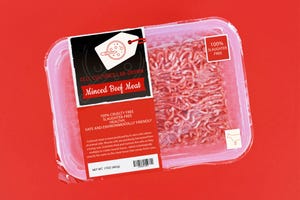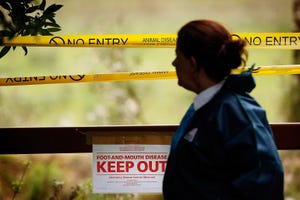5 Trending headlines in the beef world - May 3, 2022
Here are 5 stories in the beef community, you don’t want to miss.

BEEF magazine scoured the country looking for what has cattle producers talking. Here’s a look at 5 headlines that appear to be at the top of the list this week.
Montana Attorney General Austin Knudsen is warning Montanans of a scams that could be impacting many Montana ranchers. One investigation is still ongoing, but the Office of Consumer Protection estimates that a Canadian company has stolen up to $5 million from Montanans after receiving payments but never delivering the promised product – and other criminals may be conducting similar scams.
The company, New Way Ag, promised grain hay, barley straw, and wheat straw at low prices to quickly make sales, collected payments, and then never delivered any product to their victims. To aid in the investigation, Montanans who made payments to New Way Ag should contact the Montana Office of Consumer Protection at 406-444-4500.
“Montana ranchers are facing headwinds as it is without being scammed by crooks looking to make a quick buck. Please report any suspected scams to our office so we can hold these criminals accountable,” Attorney General Knudsen said. “If something sounds too good to be true, it probably is. Now more than ever we all must keep a watchful eye out for scammers looking to take advantage of Montanans.”
Unfortunately, the scams are not limited to Montana producers dealing with the drought. Canadian producers have also been hit hard by people promising feed and hay that is too good to be true.
Due to last summer's drought and winter's supply chain issues, cattle feed is still hard to come by in Alberta — and what's available comes at a cost. That's leading to a surge in scams, thefts and bad cheques related to hay and grain feed.
Cpl. Lindsey Anderson is with the Alberta RCMP livestock investigation unit, a two-person team that covers all livestock crimes across the province. She says crimes against ranchers have become more common.
She says some Albertans have lost upward of $50,000 after being given fraudulent cheques for cattle feed. Anderson says she's also seen money paid for feed that is never received, and an increased number of hay bale thefts.
Last summer's extreme drought in Western Canada caused domestic supplies of hay and other feed grains to dwindle, prompting cattle producers to resort to importing large quantities of corn from the United States to get their animals through the winter.
However, the winter's extreme cold weather, COVID-19-related labor challenges and other supply chain issues disrupted rail transport and delayed feed shipments.
The debates are continuing on Grassley’s bill to help smaller cattle producers.
The U.S. Senate Committee on Agriculture, Nutrition and Forestry began its consideration of two bills on Tuesday meant to further those goals.
The Cattle Price Discovery and Transparency Act would require large meatpackers to divulge the terms of their so-called “alternative marketing arrangements” with cattle producers. The alternate arrangements often set a base price for the animals that is adjusted depending on their quality and weight and are touted as an industry efficiency that has helped boost the overall quality of beef.
“We’ve got to have a cash market,” William Ruffin, a Mississippi cattle producer, told the Senate committee on Tuesday. “We’ve got to have the opportunity to sell our cattle.”
Ruffin said his options have dwindled over the years to the point that he now sells only to a single buyer. The bill aims to boost his options by requiring meatpackers to increase the number of cattle they buy on the cash market.
The second bill, the Meat and Poultry Special Investigator Act, would create a new U.S. Department of Agriculture office to monitor for anticompetitive actions in the industry.
The bills come in the wake of massive disruptions to the industry brought on by the coronavirus pandemic, which led to less income for livestock producers and higher prices for consumers.
Four companies — Cargill, JBS, National Beef and Tyson Foods — account for about 85% of cattle purchases in the country. They have been scrutinized lately for their increased profits while livestock producers struggle and consumers pay more. The companies’ chief executives are set to testify Wednesday at a congressional hearing to discuss the situation.
The vast majority of the country’s feedlots have fewer than 1,000 cattle, according to the USDA, but they raise less than 20% of the country’s beef cattle. Feedlots with 32,000 or more cattle account for about 40%.
“In a nutshell, everybody is talking about competition,” U.S. Sen. Chuck Grassley, R-Iowa, a co-sponsor of both bills, said Tuesday. “We’re talking about bringing competition to an industry dominated by four packers and a cozy relationship with the big feedlots of four or five states, and they want to keep their chain moving. They don’t care whether there’s room for any independent producers or not.”
Here is something that has not been seen from satellites in space before: Cattle burps.
The emissions were detected by environmental data company GHGSat's high-resolution satellites in February, according to a news release from the company. In April the company's analysis confirmed that the emissions came from a cattle feedlot in California's Joaquin Valley.
The satellites recorded five emissions, says GHGSat. If these emissions were sustained for just one year, enough gas would be released "to power 15,402 homes," the company said.
Methane emissions from cattle have been identified as a significant contributor to climate change. As cows digest their food, they release methane, mostly through their gassy burps. But the methane they burp up is a powerful greenhouse gas that traps heat in the atmosphere. The Food and Agriculture Organization (FAO) says that farm cattle contribute to 10% of greenhouse gas emissions worldwide generated by human activity.
Brody Wight, the sales director at GHGSat, told CNN this is the first time the company knows of in which scientists were able to use satellite imagery to pinpoint methane emissions from cattle farming. The company has three high-resolution satellites in orbit, which it has previously used to measure emissions from open-pit coal mines. Each satellite is just the size of a microwave oven, says GHGSat.
Each satellite flies over a designated location for just about 20 seconds, taking a quick "snapshot" of emissions, Wight said. Over time, regular monitoring with these satellites could create a "temporal picture" showing the change in emissions over time, allowing farmers to, for instance, test out the impact of different diets on cows' methane emissions.
And all eyes are on researchers looking for a solution to the Asian longhorned tick and it’s impact on cattle herds.
The Asian longhorned tick, is just a little bigger than a poppyseed and it carries a rare pathogen that’s been found in some Virginia cattle.
Theileria orientalis Ikeda strain is a tick-borne disease that causes anemia, death and abortion in cattle. While it is not a risk to human health, it carries the potential for significant economic impacts on cattle farms.
Because the longhorned tick can reproduce asexually, “one tick can produce thousands of ticks,” said Dr. Kevin Lahmers, a veterinary pathologist with the Virginia-Maryland College of Veterinary Medicine.
The tick is native to the Pacific Rim but has spread globally. “It will feed on lots of different hosts … including migratory birds that travel hundreds of miles,” Lahmers explained.
While T. orientalis infection may have been misdiagnosed for years, it has been documented in Virginia cattle since September 2017, when seven cows died in Albemarle County. Since then, the pathogen has been detected in at least 31 Virginia counties—from Northern Virginia to the Shenandoah Valley and into Southwest Virginia, and six other states.
About the Author(s)
You May Also Like



